“Give me a full ballerina skirt and a hint of saloon and I’m on board,” says Nigel from “The Devil Wears Prada.” My own version of this quote is: “Give me a pastel palette and a hint of romanticism and I’m on board.” It’s actually no coincidence that Vivetta is one of the brands that best represent my aesthetic.
This preamble was meant to say that this one is supposed to be Fashion Week. It’s supposed to be a backstage bustle, running sessions around Milan looks anticipating future trends from which to take inspiration. Actually, it is. It’s all that, but in digital form, which doesn’t lack in creativity, by the way (in fact, it leads us to new paths), but it’s still different, and melancholia is acting up. What brought a touch of color into this gloomy atmosphere was the opportunity to interview fashion designer Vivetta Ponti in a showroom, one week before the digital debut of her FW21 collection in this “weird” Milan Fashion Week. “Are you interested in this?” They ask me. “I’m already there,” I answer with a huge smile on my face.
With that same, huge smile of mine, I went to meet Vivetta. A few lines ago, I was telling you about how this whole situation has led us to new paths in terms of Fashion Week: for me, the new path was to visualize Vivetta’s FW21 collection through the words of the designer herself, who guided me through a sort of “personal tour” in the discovery of the garments, inspirations, and concept of romantic yet “dark” illusion that hides behind them. She made me touch the fabrics, notice the details, she showed me her creative palette in a unique way, her own, tapping into her notes, drawings, and memories of a lockdown that brought some changes, but also emphasized the importance of respect towards nature and people, of being able to reinvent yourself and see your glass as half full, despite everything.
With this spirit, Vivetta Ponti talked to me about her new collection, her new world, or rather, her personal Arcadia, and about Vivetta’s vision, both in terms of brand and individual. In this way, it’s still been Fashion Week.
In this way, the will to dream came back, together with the desire to believe in the power of beauty, that kind of force that turns fashion into a magical means of communication that should be celebrated and, above all, experienced.
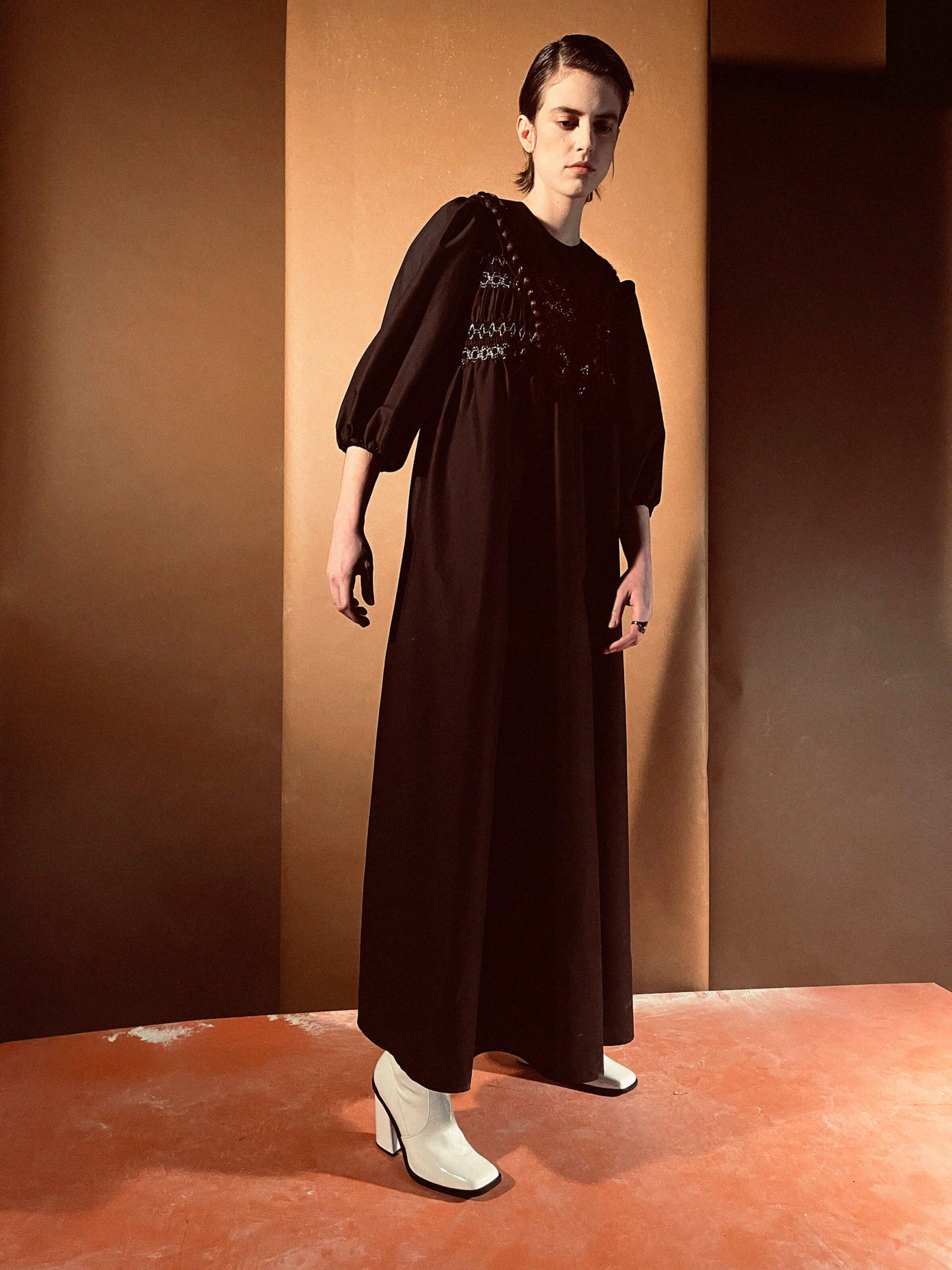

What are the inspirations and the representative garments of this new collection?
This is a monothematic collection compared to the previous ones, it takes inspiration from the 1990s Oltrism and, specifically, the artwork “Esplosione di un Fiore Energetico” (explosion of an energetic flower) by Linda Granito. I intended to recall the 1960s mood by working on the concept of optic illusion centered on a floral and romantic explosion, a feminine burst that aims at some refined details. The shapes are very tapered and oversized, in fact, another theme is that of the micro and macro: for example, clothes with a small pocket have an even tinier overlapping pocket. Another important shape is the printed HD baby-doll, and I wanted to keep the same shapes even in the other fabrics so as to give a clear idea of what the collection was about. Then there’s the series of tulles, both heart-shaped and mariner-style, which is a new version of the iconic pieces by Vivetta, especially in the pink and red shades.
As for the rest, the palette is made of touches of black, white, grey, green, yellow, pink, and red, precisely. As for coats, I started from the classic 1940s styles, quilted coats with velvet flaps which I reworked in a quilted maxi size, with the bow detail and the floral pattern. The hair braids recall the Victorian Age, instead, specifically the jewels that locked hair strands: the braids represent a free and irreverent woman, and they’re also the surreal element of the collection. To break the romanticism, there’s an element of contrast represented by the masculine fabric, poplin in particular. The collection has been photographed by Paul Kooiker: he’s an art photographer, and I asked for his help so that I could suggest some oneiric image, one of a more dream-like and less funny kind, therefore highlighting the “dark” side.
Speaking of production, how have dynamics changed over the last year?
What’s changed is the way of planning the collection: if we look at the bright side, this situation made me design my garments focusing on the occasion of use and their wearability. I’m trying to create some everyday clothes, with more daily fabrics and shapes, but always with a special touch. Right now people are buying less, so it’s important to invest not only in image but also in the production of garments for which people can fall in love. Moreover, we’ve downsized the collections, and this is good for the environment as well, which is something that I care a lot about.

“This is a monothematic collection compared to the previous ones, it takes inspiration from the 1990s Oltrism and, specifically, the artwork ‘Esplosione di un Fiore Energetico’ (explosion of an energetic flower) by Linda Granito. I intended to recall the 1960s mood by working on the concept of optic illusion centered on a floral and romantic explosion, a feminine burst that aims at some refined details.”
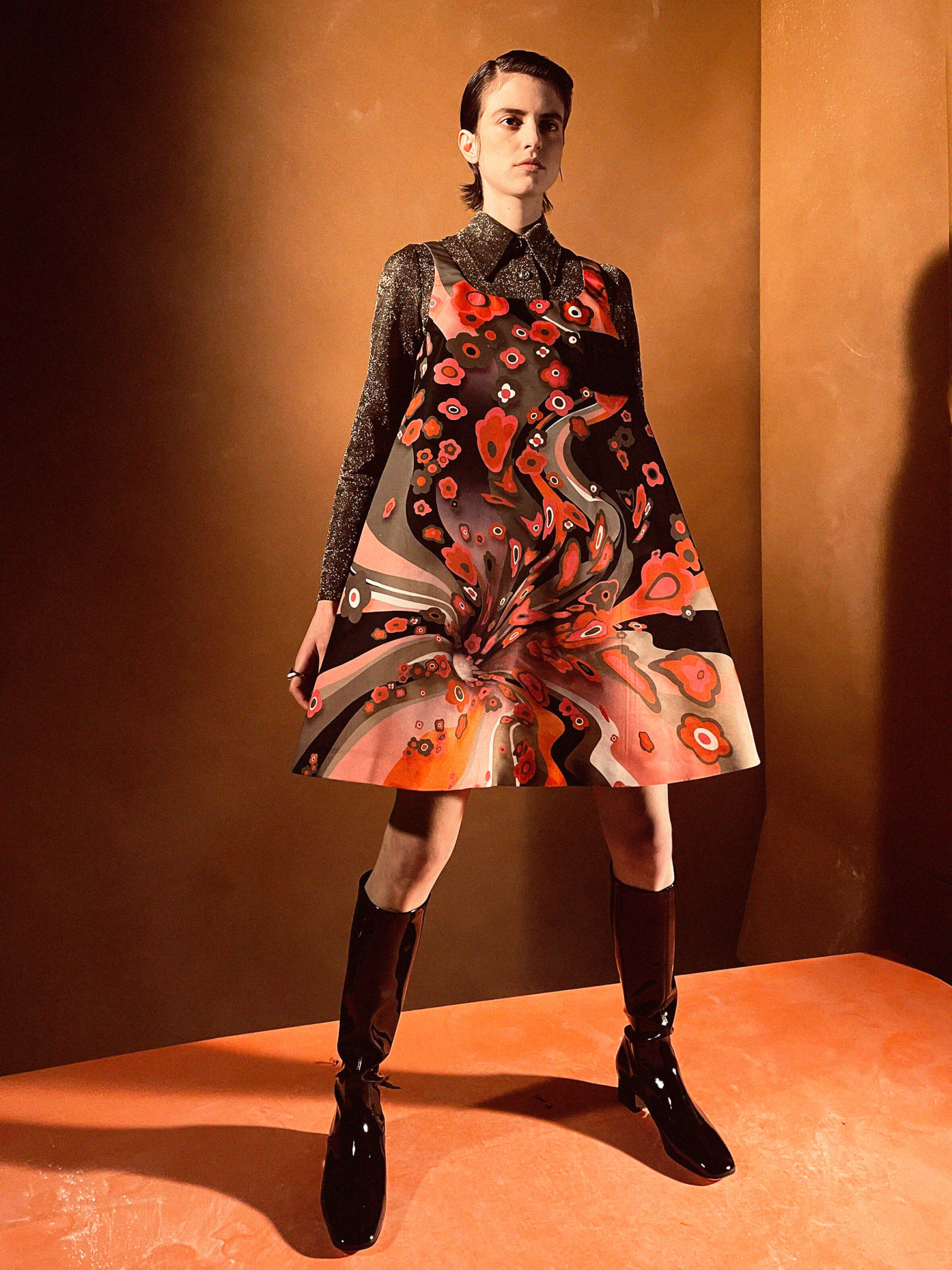
As for the attention to detail and craftsmanship, instead, which is always important for your brand, do you hope that a rediscovery of this aspect occurs, especially among young people?
Everything we make is manufactured in Italy, and this is very important in order to enrich the economy of our country. I’m also trying to use recycled or organic fabrics, something that not everyone has the possibility to do, but luckily many producers that didn’t do that before are doing it now, printing houses, in particular, have started to use ecologic colors. All my garments made of green fabrics have a tag which is a sort of letter for the client on the importance of ethical and sustainable production. It’s a bit more expensive, but it’s a choice that everyone should make.
What were the biggest challenge and satisfaction coming from this new collection?
So far, the biggest challenge has been the making of the lookbook because we had the photographer come here from Amsterdam and the model from London. As for satisfactions… Still none, but they’ll come (laughs).
What was lockdown like for you?
Terrible, not only because I was worried about COVID-19, but also because all companies were closed. When lockdown started, I had just submitted the first half of my sketches and I had the second half ready to follow next, but as everything was closed and the situation was worrying, I modified the half that I still had to submit. For me, personally, it was complicated because we were in our country house in St. Francis Wood in Assisi, with the kids, but we only had one computer with us, so every day we had to handle both my meetings and my son’s. However, we’ve learned to work in a different way: we were used to traveling a lot because I have the design department in Florence, the company in Cattolica, and the sales department in Milan, whereas, thanks to Zoom, we saved a lot of time, and it’s a way of working that, when necessary, we’ll always approach.


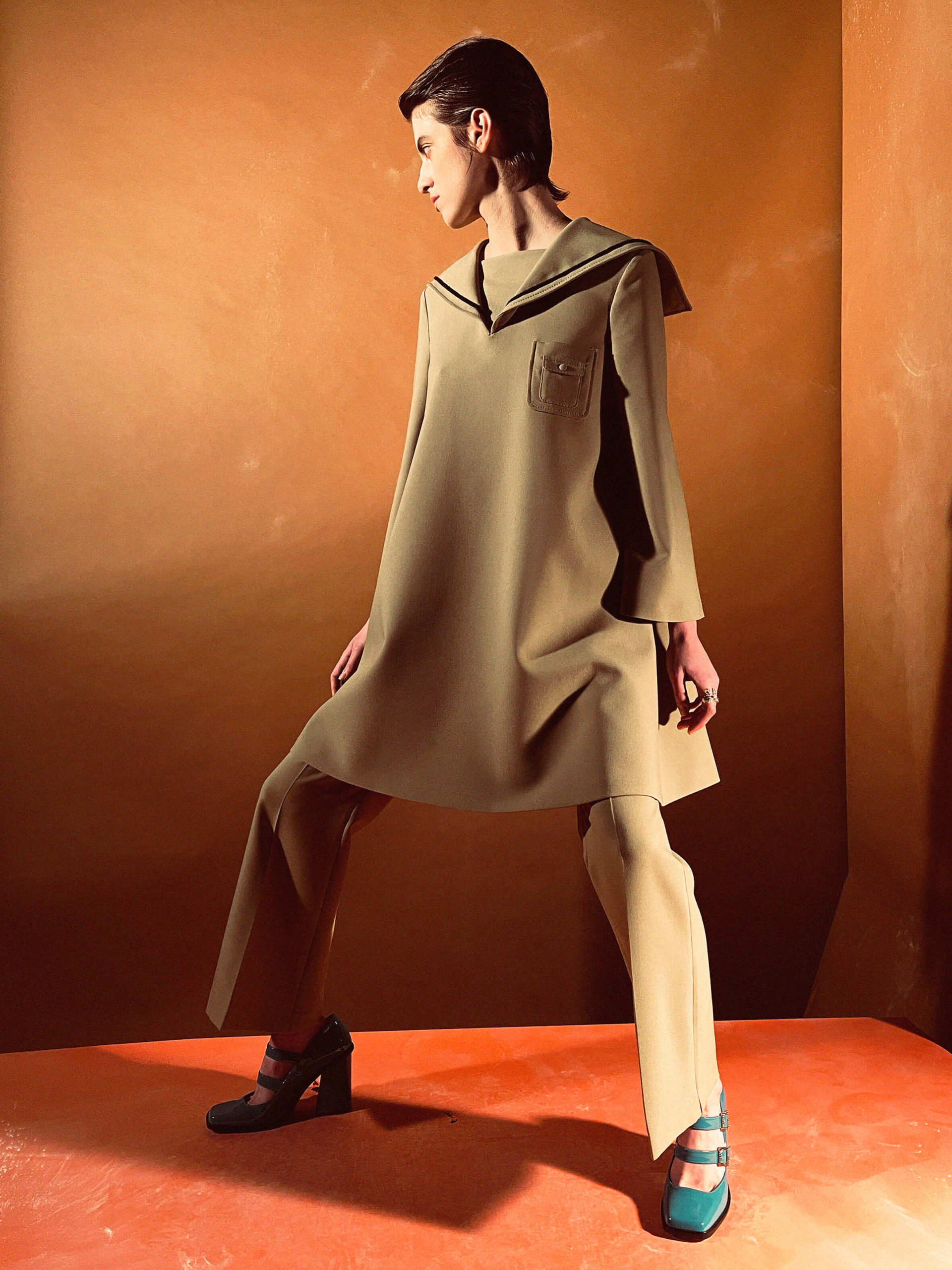
“We’ve learned to work in a different way: we were used to traveling a lot because I have the design department in Florence, the company in Cattolica, and the sales department in Milan, whereas, thanks to Zoom, we saved a lot of time, and it’s a way of working that, when necessary, we’ll always approach.”
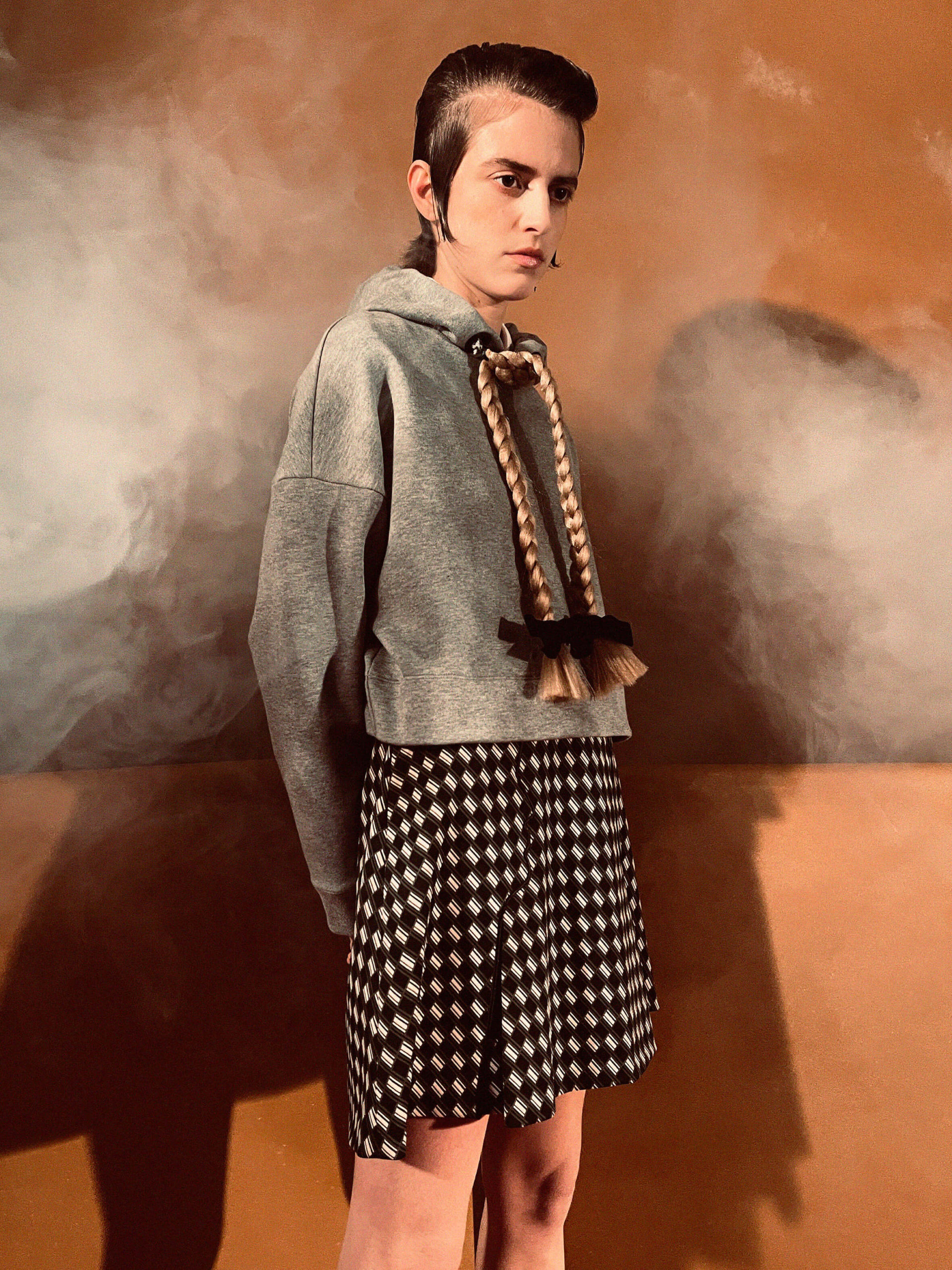
Some of your sources of inspiration are nature and animals: we find them in your looks and they all recall the concept of Arcadia. What’s your personal Arcadia?
Exactly, in fact, I imagine my personal Arcadia just like the representations of heaven, with a florid nature and animals that are not scared of men. I dream of a world in which nature is protected and defended with love and attention, nourished with respect.
Speaking of light-heartedness and surprise, what message would you want to deliver to the women all over the world who wear Vivetta?
When I design, I have fun, and I’d love for my garments to make customers smile and put them in a good mood. I believe in the concept of seasons, but I don’t believe in fashion as a trend: when you have a clothing item you like, you’re going to wear it even for 20 years. In fact, a fashion designer is satisfied when the people who buy their garments keep them and feel good in them forever.
You said that “Art is the highest form of expression, and clothes are the best means to make art more accessible for people:” where do you look for art in everyday life?
The funny and childish mood that seeps through my collection is something that I have myself and that I don’t want to lose, I realize it even more now that I have two kids. I really believe in the importance of keeping a positive and light-hearted attitude, where you focus more on the solution rather than on the problem, trying not to put yourself out. I hope my collection conveys this very positivity to people.

“I really believe in the importance of keeping a positive and light-hearted attitude, where you focus more on the solution rather than on the problem, trying not to put yourself out.“
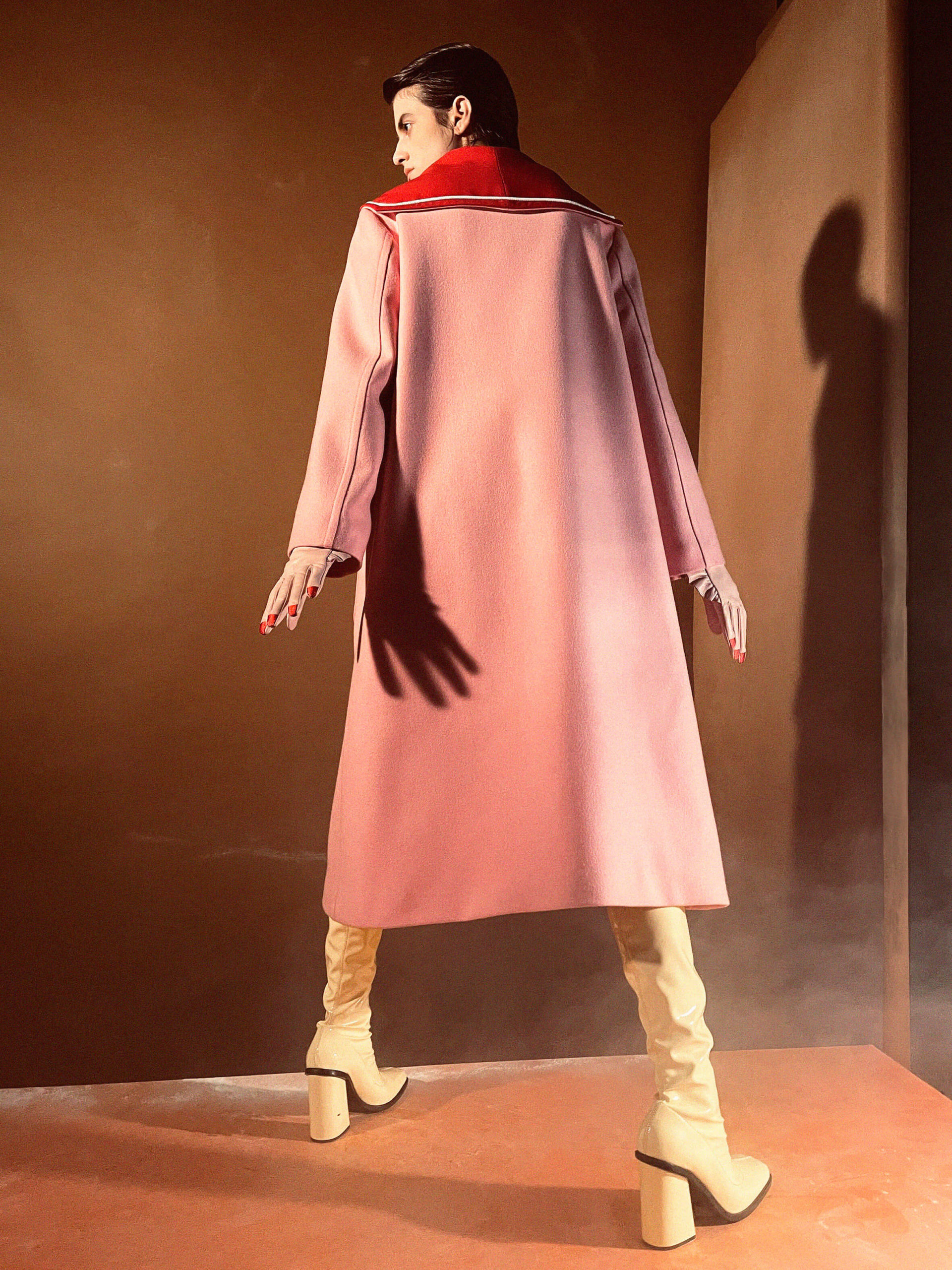
If you could team up with an artist from the past or present, who would you choose?
I’d love to team up with Virgilio Villoresi: we’re good friends, and he’s a person I really admire, we always say we want to make the video for the new collection together but we never make it (laughs), but when we make it, and I hope this happens soon, it will be very nice, I’m sure about that. Virgilio keeps working in a traditional way, and I truly like that, he always aims at surprising and looking for that special detail, it’s something that I feel very close to myself.
What’s your motto?
I always see the glass as half full: in every negative moment, you need to be able to transform that negativity into something that can give you more, that makes you change, that makes you grow up.
The book on your nightstand right now.
I’ve ordered online a book called “Instant moda” by Andrea Batilla, while right now I’m reading “Fashion Confidential” by Mariella Milani. The book that has struck me the most in my life is Salvador Dali’s autobiography, and after that, almost on a par with it, “Lolita” by Vladimir Nabokov: I’m really attached to that one because, when I founded Vivetta, my idea of woman came from Lolita, and it’s a reference that’s still recognizable anyway.
What’s the last thing you discovered about yourself?
Jealousy (laughs).
Photos by Paul Kooiker.
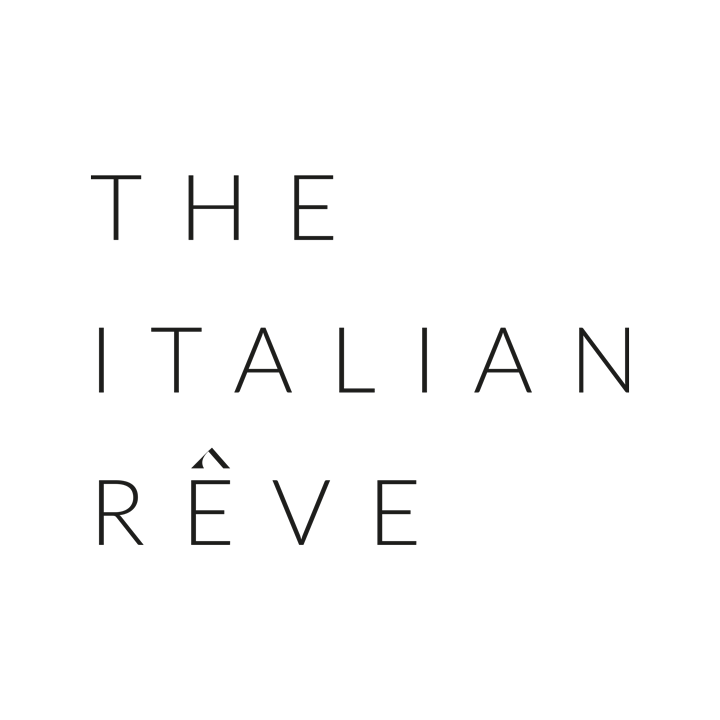
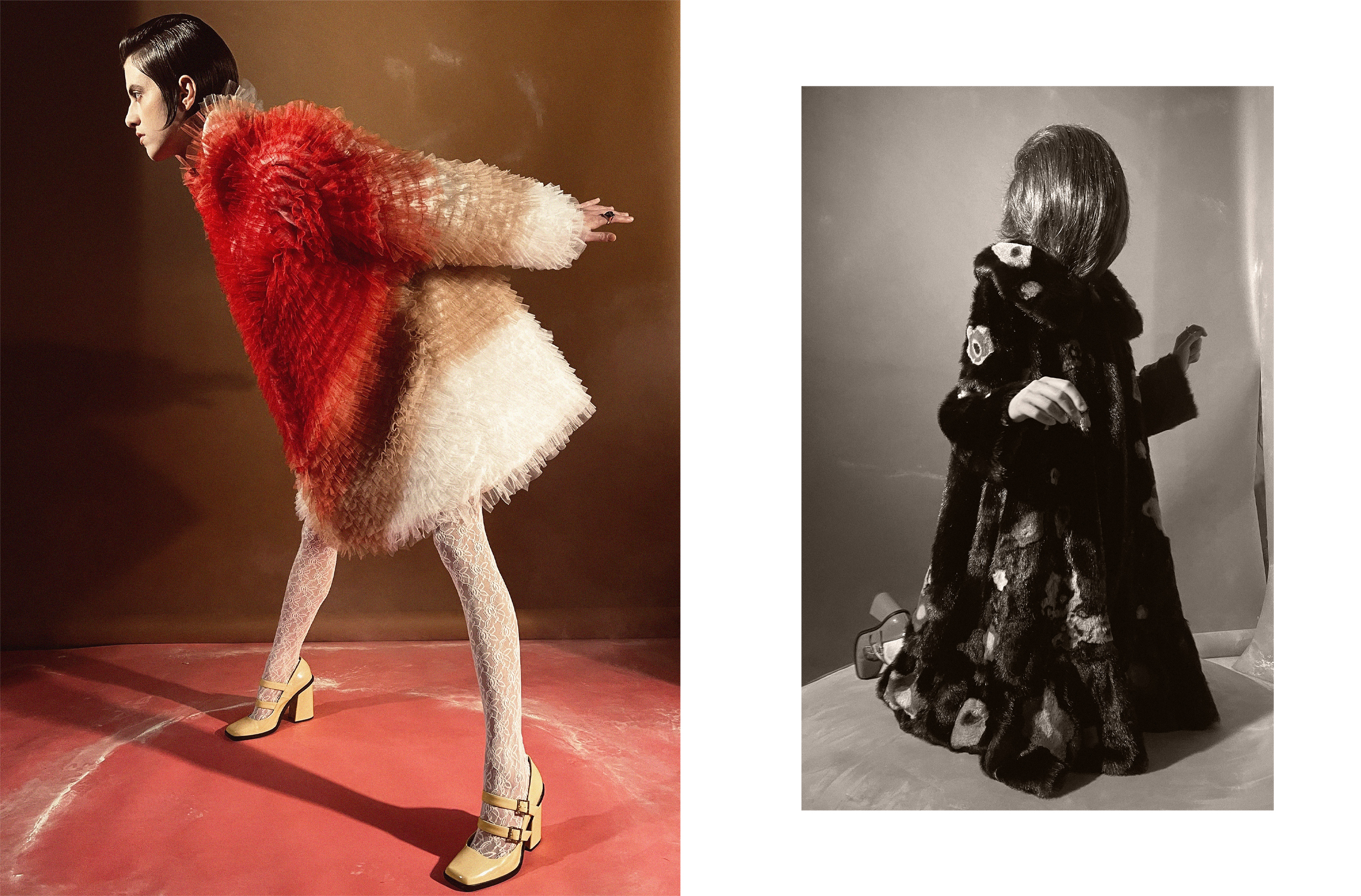
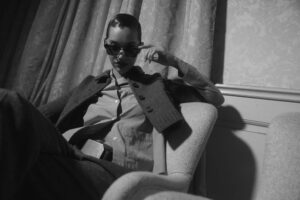
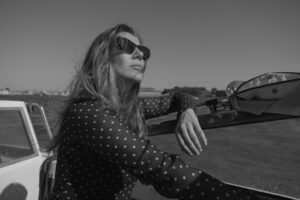
![Interview With Norbert Stumpfl [Executive Design Director of Brioni]: The Humanity of Creation](https://www.theitalianreve.com/wp-content/uploads/2023/06/EP_EDP_Essentiel_1-300x169.jpg)
